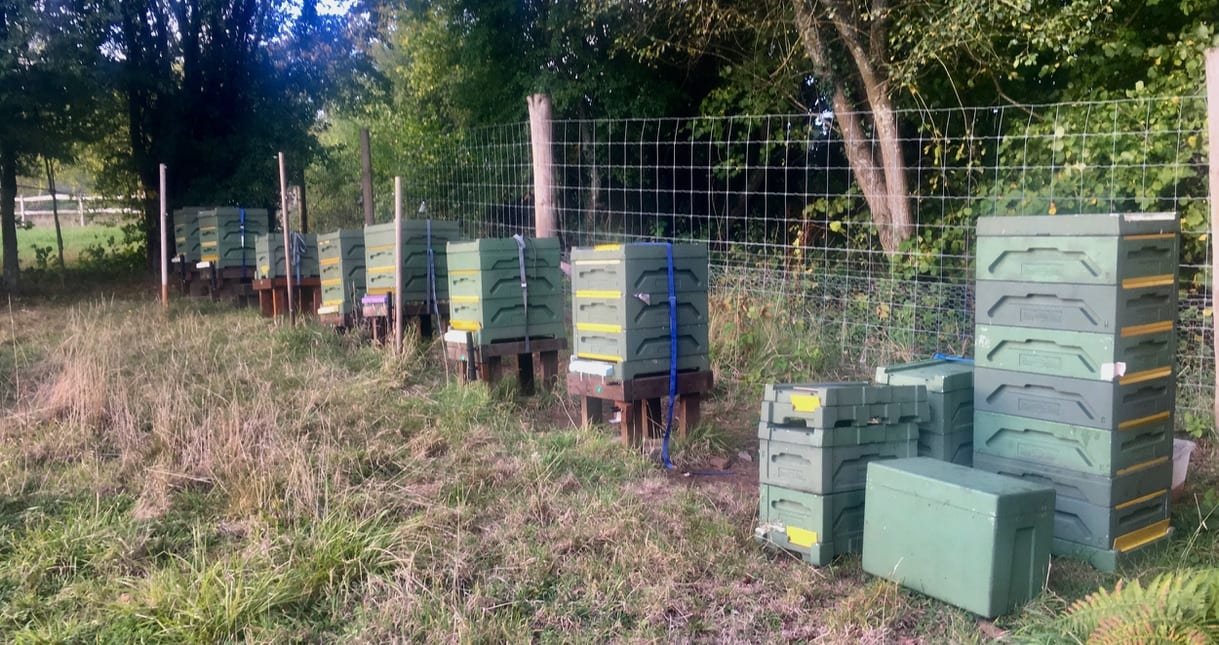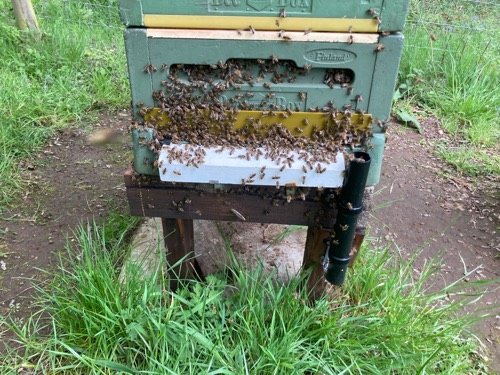
Robbing
Colonies steal each other’s honey
6 minute read
Basic Assessment: Aware of the danger of robbing and how to prevent it.
If bees discover a source of honey (like when you are inspecting a hive, two boxes are not properly locked together or a frame of stores is exposed during an inspection), they return to their hive and inform the colony there is a fast food fest nearby. Robbers may raid dead or dying colonies and transmit disease.
Excited robber bees. Please magnify the video by clicking the square box.
There are four patterns of robbing
Entrance only — typical flight and fighting — the commonest pattern. The robbers approach the hive with a horizontal zigzag flight pattern, and there is busyness and possibly fighting at the entrance. When it is mild, it can be difficult to differentiate from orientation flights.
They assume cracks lead to some honey, they form little groups trying to get in somewhere where no gap exists.
Entrance and cracks
Silent robbing — it is difficult to spot an occasional bee whose flight trajectory is from another hive. It is rare.
-

Robbing through a gap between clearer board and hive body.
-

Wasps trying to enter the hive through a gap at the edge of the entrance.
-

Trying to get through a gap between the boxes despite it being covered with tape.
The first photo illustrates what happens when the entrance is reduced to one bee space. Middle: A new-style entrance reducer with an old style floor leaves a crack at each end. The last photo shows how the new style Beebox entrance is easy to defend.
Routinely check elderly wooden and poly hives for cracks greater than 4 mm that might admit a bee or wasp. Poly boxes that are assembled frequently develop cracks..
In a dearth, robbing is easily precipitated, and if your hives are close together, inspecting them can become almost impossible. Under these circumstances, be swift and carefully cover anything that might attract nosey bees. If you must inspect them properly, close all the entrance early in the morning or in the evening. The foragers are too obsessed with getting in to the hive to cause a problem.
Management of robbing through the front entrance
The only action required is to reduce the entrance to one bee space. There may be a log jam, but it is safe if the hive has a screened floor. Let the bees out in the evening. The next day, they will have forgotten all about robbing.
Place a plastic tunnel across the entrance (perhaps fashioned out of translucent corrugated sheeting or plastic tubing). This method may deter wasps but does not make any difference to bees as they are intelligent enough to solve the puzzle.
Smear Vapour Rub around the entrance. It confuses robbers, not colony members. Reducing to one bee-space is more reliable.
Books advocate reversing the position of the robbed and the robbing hive.
The bee books suggest moving a robbed colony to another site. This makes sense for little nucs; otherwise it is barmy.
12.




